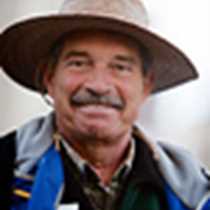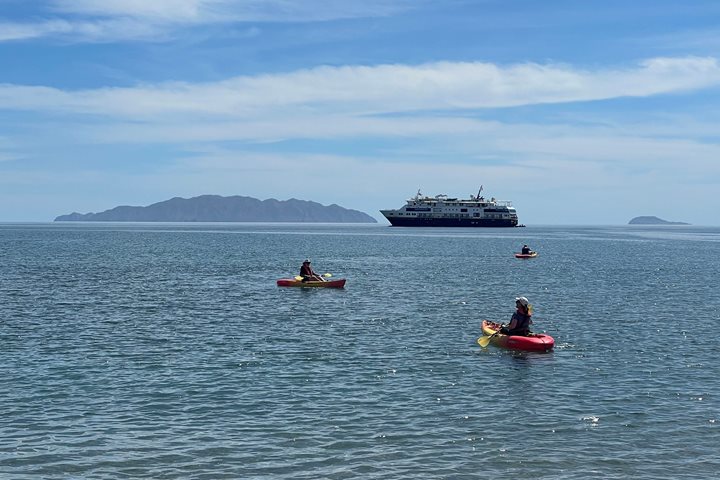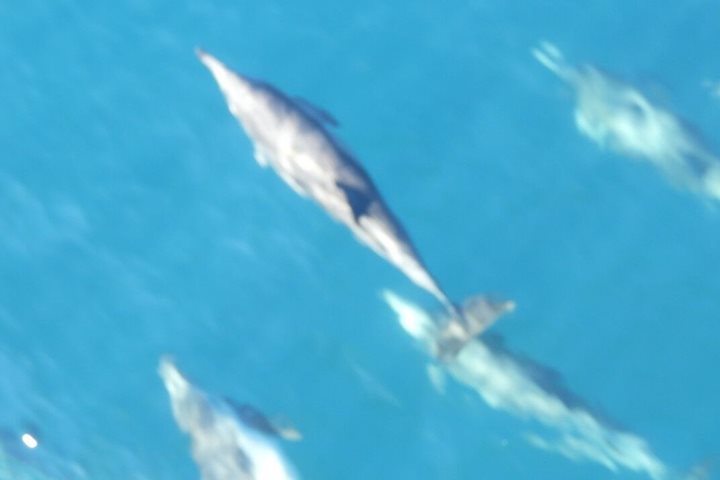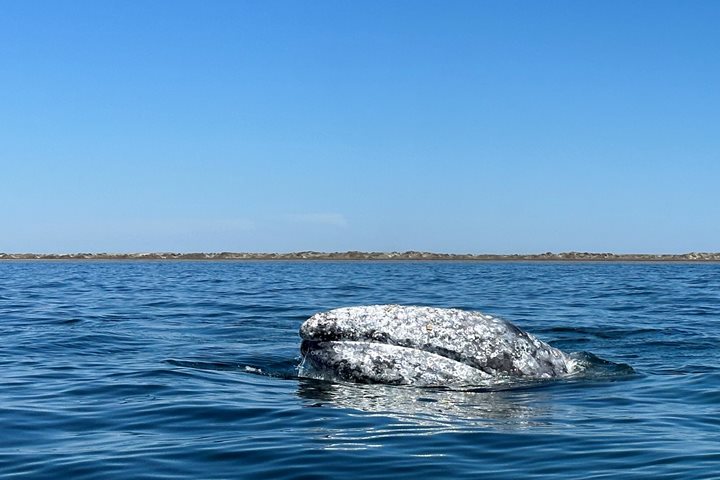Morning found us sailing by the END OF THE WORLD, called Finisterra by the Jesuits that were stationed here in the early 1700s. The lights of the city of San Lucas shone strongly behind the hills at the seaside, but the touristic part of Cabo San Lucas was dark: a light out! All the luxury buildings were dark. But as dawn approached, we began to see humpback whales. By the time we had approached the Friar Rocks, or Rocas de los Frailes, moments before sunrise, visibility was good. Slowly we pushed into the small bay, and had the opportunity to see the arch, that granite structure with this rock formation. Between the first and second rocks is a small platform, where a number of California sea lions roost, and we could hear them barking and growling.
After a while, we turned around and headed out of the bay to sail along this extreme southern coast of the Peninsula of Baja California, letting ourselves be shocked by the damage done to the hotels by the hurricane Odile, who lashed this part of Baja California. While en route, we enjoyed the sight of many more humpback whales, which measure a good 45 feet (or 15 meters), as they followed us to our docking destination at San Jose del Cabo. As soon as the ship was securely tied to the dock of the modern marina, we disembarked and boarded two buses which took some of us to the center of town, and others to the estero (small, slowly flowing waters with a great amount of vegetation).
At the estero, we walked slowly along its banks to enjoy the good amount of land and sea birds, looking for food in those shallow waters.
In town we were taken to the blown glass factory to enjoy a short presentation on the making of a lovely glass whale! Afterwards, we walked two blocks and saw the old mission built by the Jesuits in the 1730s. It is in use today. Then we all took off on our own, to explore the shops with touristic material, including a few bottles of the very good 100% agave tequila. Yes, there were Cuban cigars also…
By 12:20pm, we were all back at our starting point, ready to board the buses to take us back to the ship. Immediately the engines were warmed up, and we took off, sailing south/southeast, in search of the big behemoths, which we almost immediately saw. A good two hours were spent enjoying the breaching and frolicking behavior of these whales, as some were females with calves. In one case, we followed a youngster, still swimming with mother, who breached and breached again, we supposed imitating and learning the technique from its mother.
Eventually we had to head east and then north, into the Gulf of California, so that we arrived in time to tomorrow’s destination, the proximity of Isla del Carmen, so named by Francisco de Ulloa in the 1600s. Here we expect to see different species of whales…







